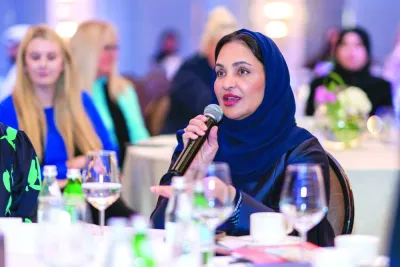By Mikhil Bhat/Doha
Even as the top three or four in the highly competitive world of men’s tennis hog all the limelight, the psyche of players on the fringe and beyond is very intriguing.
There are always players trying to put a foot in at the door of the elite club at the top and yet there are many who can’t even get into the queue to the front door.
Though he still has a long, winding road ahead of him, Dusan Lajovic, for now, has a reason to be happy. After beginning 2014 at 117 in the ATP world rankings, Lajovic produced a few good results including a fourth-round appearance at Roland Garros this year to rise into the top 100. He is ranked 69 at the moment and in some good company; he is the second highest Serbian behind world number one Novak Djokovic.
“I played pretty good in the big ones and won rounds in Wimbledon and Australian Open. When you play in the big ones, you are climbing up the rankings pretty quickly. Still, I have a lot of improvement to do. If I keep playing the way I was playing in 2014, I think it will be even better next year,” Lajovic said after some practice at the Khalifa International Tennis and Squash Complex yesterday.
“I think it is easier for us to do so now,” added Lajovic, who is enjoying tennis now that he has “broken into the top 100 and playing in some big tournaments”.
“There were other players (from Serbia) who broke into the top 100 — Novak, Janko (Tipsarevic), Victor (Troiki). Their advice helps. Whenever we are in the same tournaments, he (Djokovic) likes to practise with one of us… me or the other Serbians. This benefits us a lot. Practising with him is different from how we do it normally because it is of higher quality, has faster tempo… everything is at a higher level.”
Lajovic is in Doha almost three weeks ahead of the Qatar ExxonMobil Open for some much-needed preparation ahead of the 2015 season.
“I think it is good for us to do the preparation here and then the tournament because you get to know the courts, you get good weather here. Also, before Australia, it is good preparation, considering you want to do it closer (to Australia) than somewhere in Europe, where you will have to play indoors (because of cold weather),” the 24-year-old said.
Last year, he had to go through the qualifying rounds to make it to the main draw at the Australian Open before he made it to the main draw at the French Open. After going through the first three rounds without losing a set, Lajovic was up against Rafael Nadal. “It was quite a short match, but it was a great experience for me to play the King of Clay at (Philippe) Chatrier,” Lajovic said of his 1-6, 2-6, 1-6 loss.
Nadal had a forgettable season after winning the French Open and pulled out of a couple of tournaments, including the US Open due to a right wrist injury.
In August, Lajovic was headed to Manacor in Spain to practise with Nadal. “At the French Open, that was the first time I played him. When you practise with the top players, including Novak, Rafa, what really strikes me as a player is their intensity and quality.
“Sometimes you have practised two hours but you don’t think you have improved. But with them, every minute there is improvement and they are doing it at the highest level possible. I practised with Rafa and we had a couple of hours of power hitting. That was like going through your boundaries and limits,” Lajovic recalls.
Talking about Nadal, he said, “While playing points, you know it that 80 percent of the time he is going to go to your backhand, but it still doesn’t help even though you know that you have to play 10 backhands in a row that are so deep. You just don’t have enough power or energy reserve to make him suffer or put him in a defensive position.”
So when there is so much domination at the top, what are the players outside of that club talking about? “About books and movies… with some tennis for a couple of minutes and then back to books and movies…, ” he laughs, then adds, “I am joking, of course.”
“That depends on a lot of things, including age. You could have a guy who is 30-something, who would be thinking differently. We talk about how if you could improve step-by-step, you could head to top 50, and then you want to move to top-30, then to top-20 and so on. You always want to chase somebody’s position ahead of you.
“Once you get there, you think ‘this is nothing special, and I want more’. I think this is the healthy way of thinking. Maybe it won’t happen, maybe you will always stay at 60. But if you give your best, that’s fine. But if you are satisfied at 70 and you want to stay there, that’s not a great attitude.”

Serbia’s Dusan Lajovic, ranked 69 in the world, prepares to hit a forehand during practice at Khalifa International Tennis and Squash Complex in Doha


